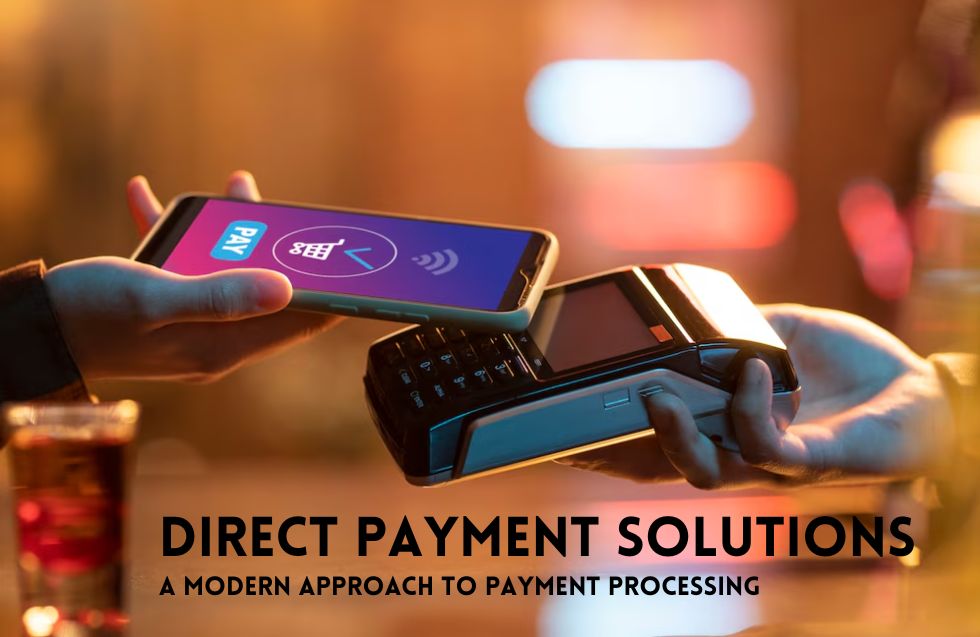In today’s world, receiving payments isn’t a challenge anymore. When a customer completes their purchase and clicks ‘Pay Now’, the funds will be on your account within a couple of minutes, not weeks later. No waiting, no middlemen, no unexpected fees, just an easy and secure transaction.That’s the advantage of direct payment solutions, redefining how money moves and how businesses get paid.
With efficiency and security increasingly important in today’s world, companies are looking for payment solutions that lower friction and enhance cash flow. Direct payment solutions provide a newer way of processing transactions that is quicker, safer and more reliable than the old ways.
Whether you have a small business, an online store or big company. These solutions are redefining the way money flows and the businesses that get on board early will have a huge head start.
What Are Direct Payment Solutions?
Direct payment solutions enable funds to transfer directly from a payer’s account to the recipient’s account, without unnecessary middlemen. These can be:
- Real-time bank transfers
- Mobile wallets
- Automated Clearing House (ACH) payments
- Integrated payment APIs for web and mobile
The benefit of these systems is that they speed up the transaction time by removing some unnecessary steps and at the same time, they reduce errors, provide cost savings and provide transparency. For companies, this means better financial control and greater customer trust.
Major Benefits of Direct Payment Solutions
1. Accelerated Transactions
One of the greatest strengths of direct payment solutions is speed. Payments once settling in a matter of days are now settled in minutes not counting seconds. Faster settlements boost cash flow allowing businesses to reinvest income right away and provide more immediate stability.
2. Lower Costs
Traditional payment schemes are usually associated with numerous fees charged by banks and processors. Direct payment solutions reduce these intermediary fees, hence saving enterprises money in the long run. To high-volume companies, this can translate into significant operational cost savings.
3. Improved Security
Secure transactions are critical to fight against rising threats from cybercrime. Direct payment solutions utilize encryption, multi-factor authentication and other security techniques to protect sensitive financial information. Reduced intermediaries also translate to reduced potential points of weakness.
4. Enhanced Customer Experience
Customers want simple, quick and trusted payments to increase satisfaction. Through the implementation of direct payment solutions, companies can minimize friction during checkout, leading to loyalty and repeat transactions.
Common Types of Direct Payment Solutions
- Real-Time Bank Transfers – Allow for immediate transfer of funds from one account to other accounts. Useful for both customer payments and business to business payments.
- Mobile wallets – Using services like PayPal, Google Pay and Apple Pay allows customers to conduct transactions directly from their mobile device.
- ACH transfers – The Automated Clearing House is an electronic, secure, scheduled payment method to transfer money directly between bank accounts. ACH transfers are typically used for recurring bills and subscriptions.
- Payment APIs – Allow developers programs to secure payments and payment transactions directly within their application or website to provide seamless transactions with added benefits via smarter checkout flows and back end reconciliations.
Why Businesses Are Moving Toward Adopting Direct Payment Solutions
Organizations from all industries are realizing the strategic value of direct payables solutions:
- Operational efficiencies: In an automated world, processing becomes nevertheless manageable but with fewer errors and less time spent on administration.
- Cash flow management: Immediate settlements allow for some re-investment and freedom of strategic flexibility to move operations forward.
- Global transactions: Most direct payment systems include real-time cross-border transfer of funds and include exchange of currencies.
- Customer confidence: Transparent and trustworthy payment systems establish trust between clients and partners.
Recent survey results show that less than 70% of companies see faster and easier operations when switching to direct payment solutions, proving to be an increasing value for companies.
Challenges and Considerations
It is clear there are benefits, but there are some considerations in implementing a direct payment solution that we need to carefully plan for:
1) System Integration – Ensure your accounting and or ERP systems will be able to manage direct payments smoothly.
2) Regulatory Compliance – Ensure you will continue to comply with financial regulations such as AML & KYC requirements.
3) Technology Disclosure – Look for a service provider with smart infrastructure and guarantees uptime.
Since these considerations can easily be addressed through planning, the pains of transitioning into a direct payment solution will likely be painless.
Future Trends in Direct Payment Solutions
Payments will continue to unfold:
- AI & Predictive Analytics: Increase fraud detection, identify delivery delays and generate action oriented insights.
- Blockchain Integration: Adding security and transparency for cross border payments.
- Open Banking: Provides users with easy and secure access to third-party state account information, adding new capabilities for delivery.
- IoT Payments: Networked devices allow automatic payment in real-time of industries like mobility, logistics and smart homes.
All of these developments ensure that direct payment solutions will be at the core of so much of the future of finance.
How to Implement Direct Payments in Your Business
- Identify your Needs: Identify what type of payments make sense for your business and your customer’s needs.
- Choose a Trusted Provider: Look for an established provider that has demonstrated security, trustworthiness and ability to integrate.
- Educate Stakeholders: Educate employees and inform customers for the benefits of using automated payment solutions, which will increase acceptance.
- Monitor and Refine Processes: Monitor the performance of transactions and collect customer feedback on their satisfaction to continue to streamline the process.
Conclusion
We no longer need to involve ourselves in outdated and slow payment processing systems. Direct payment solutions offer a modern, secure and quick alternative for businesses that benefit all stakeholders. In addition, as costs decrease, cash flow increases and transactions become easier, money is moving differently in the digital economy.
So, are you ready to change the way your business pays and collects payment with direct payment solutions?
Business interested to transform their financial operations to this modern payment processing solution further can get valuable insights and practical tools on Eflow.com.













